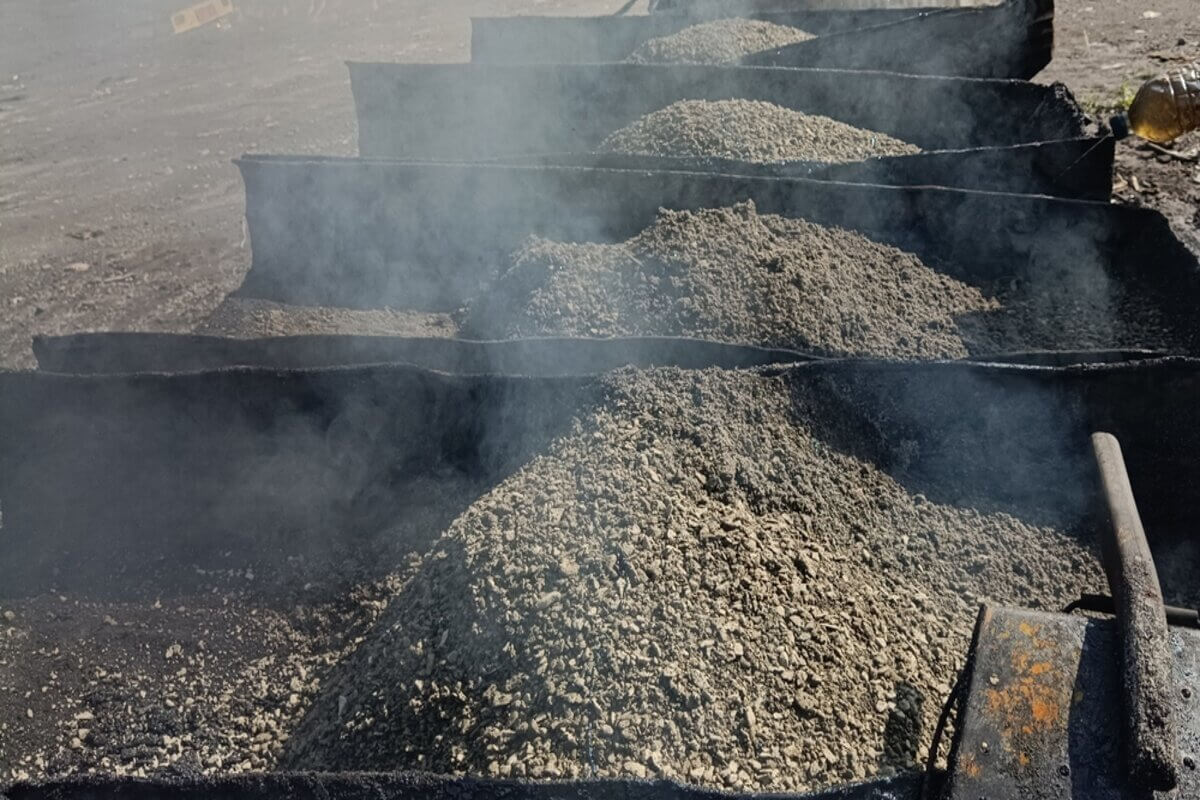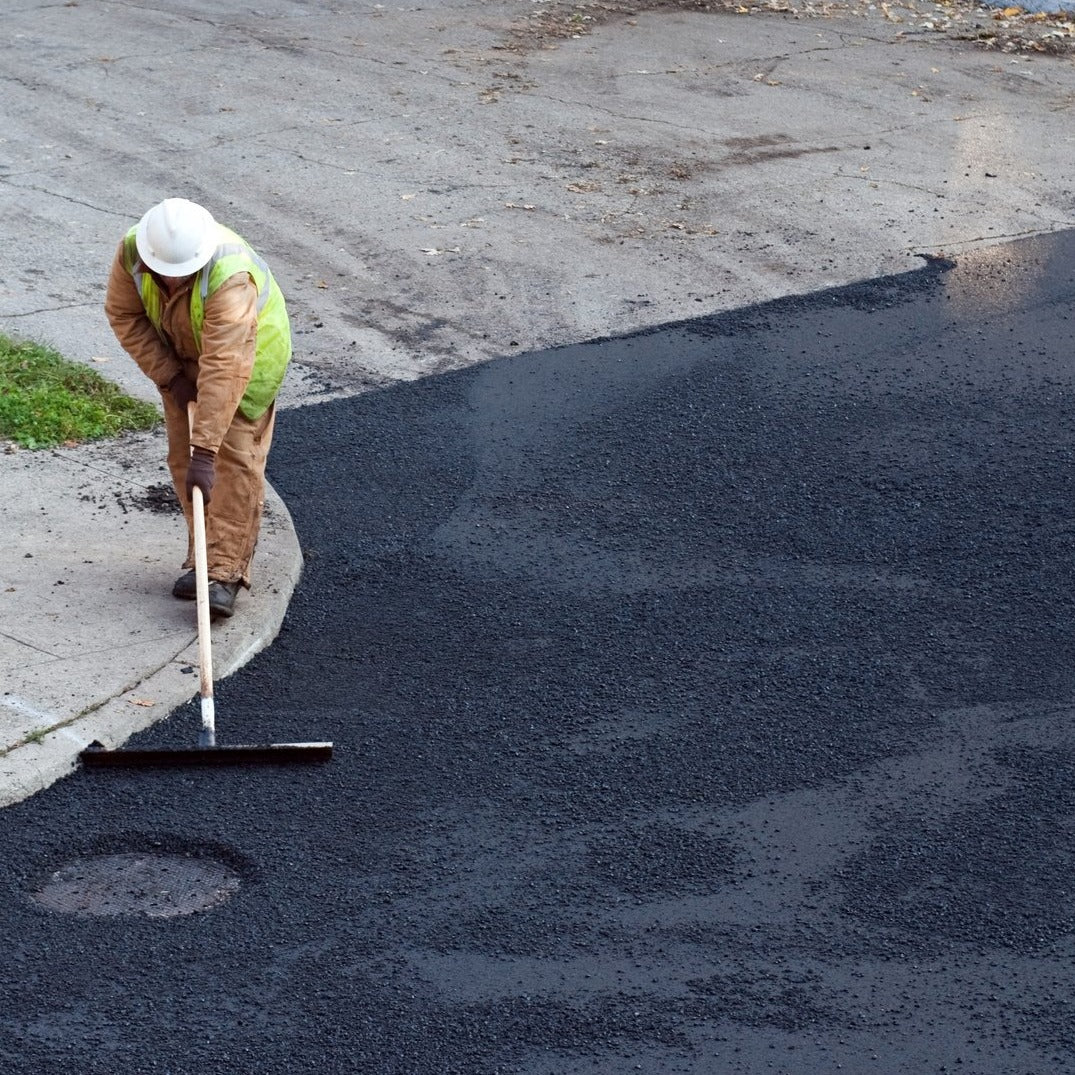Boost Building Value and Capability with Hot Mix Asphalt Paving Solutions
Wiki Article
Opening the Tricks of Hot Mix Asphalt Innovation
Discovering the midsts of hot mix asphalt innovation discovers a world where precise solutions and precise processes merge to form our roads and infrastructure. The blend of fillers, accumulations, and binders isn't merely a construction task however a calculated orchestration of toughness and performance. As we peer right into the elaborate dancing of components, a tapestry of resilience and sustainability unfolds. What exists below this surface area of asphaltic proficiency, and what secrets wait to be introduced in the realm of paving developments?Value of Warm Mix Asphalt
Warm Mix Asphalt plays an important duty in modern infrastructure advancement due to its resilience and cost-effectiveness. As the most commonly made use of paving product for roadways, highways, and parking lots, Warm Mix Asphalt uses a range of benefits that add to its value in building and construction jobs.The toughness of Hot Mix Asphalt stems from its structure, which includes accumulations, binder, and filler products that are thoroughly chosen and mixed to meet particular efficiency requirements. On the whole, the importance of Warm Mix Asphalt in framework growth can not be understated, as it proceeds to be a cornerstone of modern-day building and construction practices.
Elements of Asphalt Mixes
The structure of asphalt blends includes very carefully picked aggregates, binder, and filler products that are vital for accomplishing particular performance demands. Accumulations are the primary component of asphalt blends, offering strength and stability. These accumulations can be natural, such as gravel or crushed stone, or artificial, like recycled products from old sidewalks. The binder, normally bitumen or asphalt cement, holds the aggregates with each other and supplies flexibility and longevity to the mix. The choice of the binder is crucial as it directly affects the mix's performance in different climate conditions. Fillers, such as hydrated lime or Rose city concrete, are used to enhance the mix's workability and aging resistance. Angled Parking.The mix and percentage of these parts play a considerable function in figuring out the high quality and performance of the asphalt mix. Designers meticulously develop the mix to meet particular requirements, considering factors like traffic volume, climate conditions, and sidewalk life expectancy. Proper selection and harmonizing of aggregates, binder, and fillers are necessary for producing resilient, durable asphalt pavements.
Combining and Production Methods
:max_bytes(150000):strip_icc()/low-section-of-man-working-758486719-59da6d0a054ad90010617854.jpg)
When the aggregates are picked, the binder, typically asphalt concrete, is added to bind the materials together. The binder's quality and amount dramatically influence the mix's stamina, versatility, and resistance to ecological aspects. In addition, fillers like hydrated lime or Rose city cement might be integrated to improve details qualities of the asphalt mix, such as visite site its workability or wetness resistance.
During production, the aggregates and binder are warmed, commonly between 250-325 ° F(121-163 ° C ), to promote mixing and make sure appropriate finish of the accumulations. The mixing process needs to be comprehensive to accomplish an uniform mix that advertises the desired performance characteristics of the asphalt. Various techniques, such as set blending or drum blending, are utilized to achieve top quality and constant asphalt mixes for building and construction jobs.
Variables Impacting Asphalt Performance
Variables affecting asphalt performance incorporate a range of variables that affect the resilience, longevity, and overall high quality of asphalt pavements. One crucial aspect is the quality of products utilized in the asphalt mix.
Environmental conditions additionally influence asphalt performance. Temperature level variants, dampness seepage, and traffic loads can all impact the architectural honesty of the sidewalk. Layout considerations, such as pavement thickness and drain, are necessary in making sure the long-lasting performance of the asphalt pavement. By carefully taking into consideration these contractors, variables and designers can optimize asphalt performance and improve the life span of pavements.
Lasting Practices in Asphalt Innovation

WMA allows for the manufacturing and positioning of asphalt blends at reduced temperatures contrasted to conventional hot-mix asphalt, resulting in lowered energy usage and greenhouse gas emissions. The usage of porous asphalt blends can help mitigate stormwater runoff problems by allowing water to infiltrate via the pavement and right into the ground, advertising natural water filtration and reenergize procedures.
Verdict
To conclude, hot mix asphalt technology plays an essential duty in contemporary facilities advancement because of its toughness and cost-effectiveness. By thoroughly stabilizing parts, employing correct mixing methods, and taking into consideration numerous factors, designers can develop high-grade asphalt mixes that endure rush hour loads and severe weather. Embracing sustainable methods, such as making use of recycled products and warm-mix modern technologies, additionally enhances the ecological friendliness of asphalt innovation.
Blending and manufacturing methods in hot mix asphalt innovation include the specific combination and processing of accumulations, binder, and fillers to develop a high-performance and resilient asphalt mix.Aspects affecting asphalt efficiency incorporate a variety of variables that influence the durability, durability, and general high quality of asphalt pavements. Lasting practices in asphalt technology encompass numerous efforts aimed at decreasing the environmental influence of asphalt production and paving processes. By including recovered asphalt sidewalk (RAP) and recycled asphalt tiles (RAS) into brand-new asphalt mixes, the sector can considerably minimize the intake of raw materials and power, while also reducing landfill waste.
WMA permits for the manufacturing and positioning of asphalt blends at reduced temperatures compared to typical hot-mix asphalt, resulting in lowered energy intake and greenhouse gas exhausts.
Report this wiki page